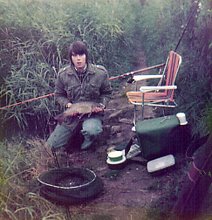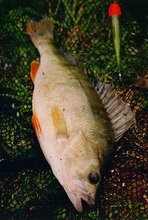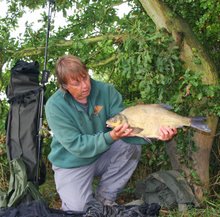 |
| Spring's arrival starts for me with Wild Garlic |
For the last couple of years I have been banging on about Wild Garlic and the wonderful things you can do with it and as Spring wades through streams of excess rainfall in an effort to arrive, like a soggy cousin from hotter regions unaccustomed to the British climate, I thought I might share a recipe that has been naturally adapted by me but widely recognised as a Classic.
First, though, you may wish to read my previous ramblings about this wonderfully evocative spring plant, found widely and usually discovered by its smell rather than by the sight of its verdant green leaves.
They are HERE and HERE. It is the botanical precursor to the bounty that each year brings, the start of the foraging year 'proper'.
An iconic 70's dish, along with Scampi in a Basket and Black Forest Gateaux, Chicken Kiev is, I suppose, usually bought already packaged and ready to cook or re-heat. Making one from scratch allows a certain amount of latitude to experiment, enhance and improve on the original recipe and the use of foraged wild garlic certainly changes the dynamic of this dish in a dramatic way.
Two skinless chicken breasts
Half a dozen or so wild garlic leaves
Breadcrumbs
1 large egg
50 grams plain flour
50 grams butter
Salt and Pepper
I lemon
 |
| Make pockets in the breasts |
First you will need to make pockets in the chicken breasts with a knife. Finely chop the wild garlic, mix it with the butter, some salt and pepper and a squeez of lemon and push half of this mixture into each chicken pocket.
 |
| Chop the garlic |
Dip the breasts in well seasoned flour, then the egg - and then do that again - flour then egg, and coat them with the breadcrumbs nice and thickly! This double coating of flour and egg helps prevent the butter leaking during cooking, and seals in the flavours and moisture, and is quite important. You might even find that you need two eggs. Remember too to make your own breadcrumbs - don't buy them!
I then put the coated breasts into the fridge for half an hour or so or until needed later in the day. This sets the covering. Gently shallow fry the breasts on all sides in a light oil until both are a lovely golden brown colour and then place on an oven proof dish in a medium oven for 20 - 25 minutes, until cooked right through. Serve with vegetables of your choice.












